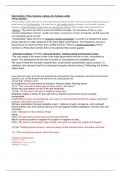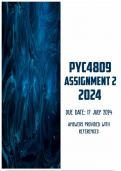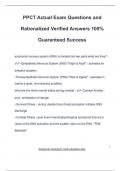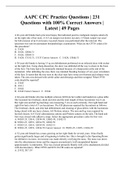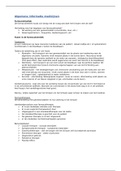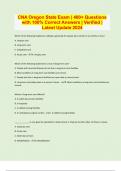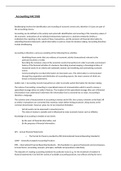Ozymandias: Time, memory, nature, art, humans, pride
-Percy Shelley
-Percy Shelley (1792-1822) is one of the most famous poets of all time. He was part of an influential group of
poets known as The Romantics. He came from a very wealthy family and was in line to inherit a fortune.
However, Oxford University expelled him for writing about atheism and, his father later disinherited him.
-Allegory. This poem has both a moral and political message. The transience of life, is a key
concept. Regardless of power, wealth and status, everyone is human. Eventually, all drift away like
an insignificant piece of sand.
-"Ozymandias" takes the form of a sonnet in iambic pentameter. A sonnet is a fourteen-line poem,
whose ideal form is often attributed to the great Italian poet Petrarch. The Petrarchan sonnet is
structured as an octave (8 lines) and a sestet (6 lines). There is a turning point/volta at line 9
(similar to a Petrarchan sonnet) 'And on the pedestal these words appear'.
- Extended metaphor, all desert, fall of all empires, shelleys radical anti-monarchy views.
-The core image in this poem is that of the huge statue which now lies in ruins. surrounded by
desert. This emphasises the fact that the power of Ozymandias has completely gone.
We read of what the traveller experienced, loose iambic pentameter( loose control), 10
syllables: five stressed and five unstressed.irregular rhyme scheme, Reflecting the broken
statue itself.
even those who seem to be the most powerful will eventually fall; time eventually overcomes even the most
powerful; and. art and literature are where the true, lasting power lies
1,2,3,4,5,6- “Antique Land”
So insignificant it is only known by travelers, influence failed. Framing device
1,2,3- “Two vast and trunkless legs of stone stand in the desert.”
Desert has connotations of lack of life and emptiness.
1,2,3,6- “On the sand, half sunk a shattered visage lies.”
Shattered creates a sense of irony with how he wanted to survive,but now he is barely
recognizable.
2,4,5,6“Whose frown and wrinkled lip, and sneer of cold command tell that it's sculptor well those
passions read which yet survive.”
Grimace, exploitation of power antipathy,sneer = malicious cruelty. Arrogance, cold command
shows shelleys own anti-violence stance as he was against military exploitation, and thus, the cold
command.
2,5,6- “Stamped on these lifeless things”
stamp
4,5,6- “the hand that mocked them and the heart that fed.”
Mock’d could be positive or negative for sculptor or negative for king.
2,5,6- “My name is ozymandias, king of kings, look upon my works yee mighty and despair”
1,2,3,6- “Nothing beside remains, round the decay of that colossal wreck, boundless and bare.”
1,3- “The lone and level sands, stretch far away.”
Possible comparisons:
1-Time: tissue
2-Memory: Tissue or MLD
3-Nature: Prelude
, 4-Art: MLD
5-Humans: Tissue
6-Pride: MLD
London: Anger, Abuse of power,
-William Blake
-London was published in 1794. Blake was appalled by the terrible conditions and poverty he saw in London.
The French Revolution. In 1789 the French people overthrew their monarchy and aristocracy. Many people in
England saw the French Revolution as a good example to follow. Blake also didn’t like established religion in
Europe because it failed to help poor people
-London is written in a very regular way and resembles a song. Each of the four stanzas offers a
snapshot of an aspect of life in the city. There is a strict, regular rhyme scheme – ABAB in each of
the four stanzas. Blake wrote London as a pessimistic poem reflecting his horror at the living
conditions of ordinary people in the capital. He reflects on how the powerful institutions – the
monarchy, aristocracy and church – have done nothing to alleviate the poverty and poor conditions.
-Cyclical structure, dramatic monologue, conversational, iambic tetrameter,
- 2,3 ”I wander through each charter’d street near where the charter'd thames does flow”
Semantic field, control
- 2,3 ”Marks of weakness marks of woe”
Metaphor, anaphora, breaks iambic tetrameter
- 1,2,3”in every infants cry of fear”
Anaphora, repetition,
- 1,2,3”the mind forg’d manacles i hear”
symbolism
- 1,2,3”every black’ning church appals”
Reference to corruption, morally blackening
- 1,2,3”Runs in blood down palace walls”
French revolution
- 2”how the youthful harlots curse”
Juxtaposition,
- 2,3”blights with plagues, the marriage hearse”
Juxtaposition,
Possible comparisons:
1- Anger : Checkin out me history
2- Abuse of Power: Checkin’ out me history :oppression from outside forces in checkin but interior
in london, internal mind forge manacles oppose carvin out me identity exterior control. Class
oppression (charterd streets, racial oppression.
3- Power of humans: Tissue: human power as source of oppression, criticise material wealth,
however different responses to inequality. Dharker offers a solution but London is cyclical.

